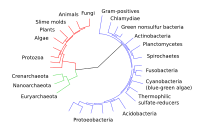
Developing, choosing and using landscape evolution models to inform field‐based landscape reconstruction studies
Sign Up to like & getrecommendations! Published in 2017 at "Earth Surface Processes and Landforms"
DOI: 10.1002/esp.4162
Abstract: Landscape evolution models (LEMs) are an increasingly popular resource for geomorphologists as they can operate as virtual laboratories where the implications of hypotheses about processes over human to geological timescales can be visualized at spatial… read more here.
Keywords: evolution; evolution models; landscape; field based ... See more keywords

Impact of vegetation on erosion: Insights from the calibration and test of a landscape evolution model in alpine badland catchments
Sign Up to like & getrecommendations! Published in 2020 at "Earth Surface Processes and Landforms"
DOI: 10.1002/esp.4741
Abstract: While it is well recognized that vegetation can affect erosion, sediment yield and, over longer timescales, landform evolution, the nature of this interaction and how it should be modeled is not obvious and may depend… read more here.
Keywords: vegetation; landscape evolution; erosion; evolution model ... See more keywords

Assessing the hydrological and geomorphic behaviour of a landscape evolution model within a limits‐of‐acceptability uncertainty analysis framework
Sign Up to like & getrecommendations! Published in 2021 at "Earth Surface Processes and Landforms"
DOI: 10.1002/esp.5140
Abstract: Landscape evolution models (LEMs) have the capability to characterize key aspects of geomorphological and hydrological processes. However, their usefulness is hindered by model equifinality and paucity of available calibration data. Estimating uncertainty in the parameter… read more here.
Keywords: limits acceptability; hydrological geomorphic; landscape evolution; uncertainty ... See more keywords

Soil net nitrogen transformation rates are co-determined by multiple factors during the landscape evolution in Horqin Sandy Land
Sign Up to like & getrecommendations! Published in 2021 at "Catena"
DOI: 10.1016/j.catena.2021.105576
Abstract: Abstract Vegetation restoration affects soil N cycling, which in turn strongly affects ecosystem functions, such as plant productivity and N availability. The soil N availability is a major limiting factor for restoring vegetation in semiarid… read more here.
Keywords: landscape evolution; transformation; soil; soil net ... See more keywords

Landscape evolution across the Cretaceous/Paleogene boundary in southwestern North Dakota, U.S.A.
Sign Up to like & getrecommendations! Published in 2020 at "Cretaceous Research"
DOI: 10.1016/j.cretres.2020.104470
Abstract: Abstract The Hell Creek Formation and overlying Fort Union Formation record a geologically rapid base-level rise that was approximately contemporaneous with the K/Pg extinction and deposition of Chicxulub-impact indicators. An outstanding question that remains is… read more here.
Keywords: level rise; landscape; landscape evolution; base level ... See more keywords

Deformation in response to landscape evolution during glacial cycles on the U.S. Atlantic passive margin
Sign Up to like & getrecommendations! Published in 2019 at "Earth and Planetary Science Letters"
DOI: 10.1016/j.epsl.2019.115759
Abstract: Abstract Elevations of Pleistocene highstand formations that lie across the South Carolina and northern Georgia coastal plain lie well above those of reconstructed past sea levels. This discrepancy has been attributed to some combination of… read more here.
Keywords: landscape evolution; atlantic passive; passive margin; response ... See more keywords

Mesozoic-Cenozoic landscape evolution of NW Mozambique recorded by apatite thermochronology
Sign Up to like & getrecommendations! Published in 2019 at "Journal of Geodynamics"
DOI: 10.1016/j.jog.2019.02.001
Abstract: Abstract The southern African plate underwent significant stresses since the Permian attributed to orogenesis and to mantle upwelling during Gondwana break-up. Rift basins developed over ancient basement structures during Early Permian and since the Cretaceous… read more here.
Keywords: landscape evolution; evolution mozambique; recorded apatite; mozambique recorded ... See more keywords

New constraints on the late Quaternary landscape evolution of the eastern Tibetan Plateau from 10Be and 26Al in-situ cosmogenic nuclides
Sign Up to like & getrecommendations! Published in 2019 at "Quaternary Science Reviews"
DOI: 10.1016/j.quascirev.2019.07.020
Abstract: Abstract Based on Terrestrial Cosmogenic Nuclide (TCN) constraints from depth profiles of one granitic regolith from Wumingshan and five fluvial terraces from Xianshuihe and Zagunao rivers, we discuss the timing of the last deglaciation, the… read more here.
Keywords: landscape evolution; landscape; eastern tibetan; tibetan plateau ... See more keywords

Role of erosion and isostasy in the Cordillera Blanca uplift: Insights from landscape evolution modeling (northern Peru, Andes)
Sign Up to like & getrecommendations! Published in 2018 at "Tectonophysics"
DOI: 10.1016/j.tecto.2018.02.009
Abstract: Abstract The processes driving uplift and exhumation of the highest Peruvian peaks (the Cordillera Blanca) are not well understood. Uplift and exhumation seem closely linked to the formation and movement on the Cordillera Blanca normal… read more here.
Keywords: cordillera; landscape evolution; cordillera blanca; erosion ... See more keywords

Phylogenetic relationships and historical biogeography of Oligosarcus (Teleostei: Characidae): examining riverine landscape evolution in southeastern South America.
Sign Up to like & getrecommendations! Published in 2019 at "Molecular phylogenetics and evolution"
DOI: 10.1016/j.ympev.2019.106604
Abstract: The pike-characin Oligosarcus is a group of Characidae composed of 22 species, which have mostly allopatric distributed species in southeastern South America and sympatric occurrence of few species. Oligosarcus shares a similar distribution pattern with… read more here.
Keywords: phylogenetic relationships; southeastern south; landscape evolution; oligosarcus ... See more keywords

A Quantitative Model‐Based Assessment of Stony Desert Landscape Evolution in the Hami Basin, China: Implications for Plio‐Pleistocene Dust Production in Eastern Asia
Sign Up to like & getrecommendations! Published in 2020 at "Geophysical Research Letters"
DOI: 10.1029/2020gl090064
Abstract: Dust plays an important role in climate, and while our current representation of dust production includes shifts in vegetation, soil moisture, and ice cover, it does not account for the role of landscape evolution. Here,… read more here.
Keywords: landscape evolution; hami basin; dust production;